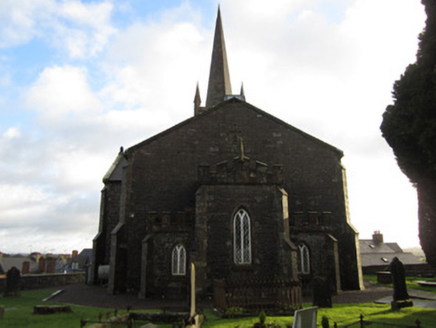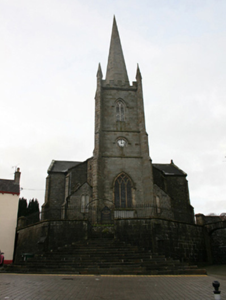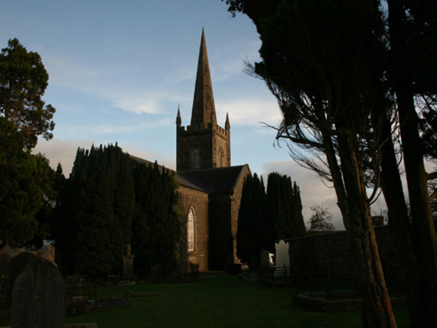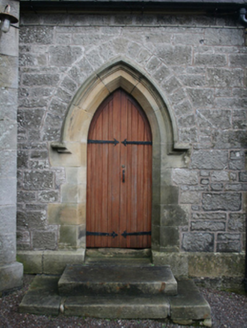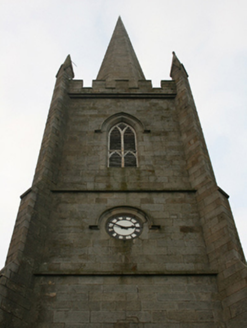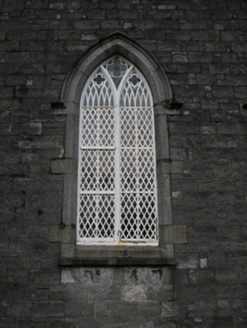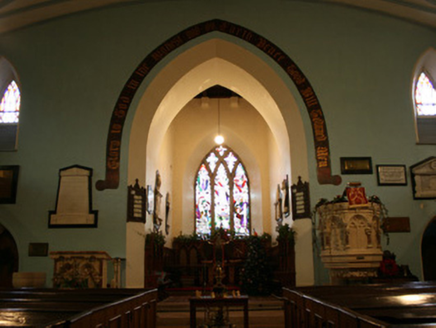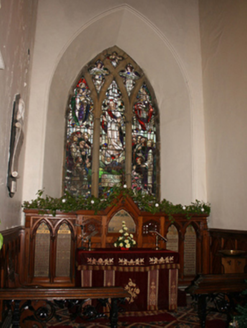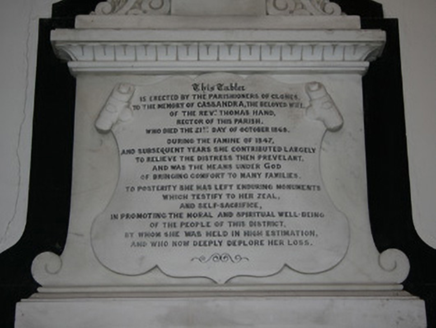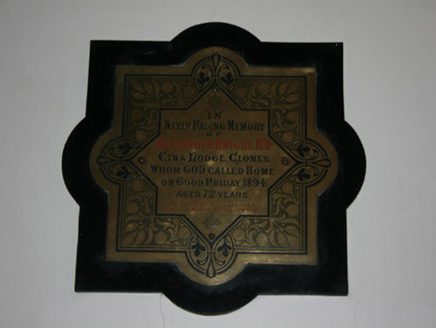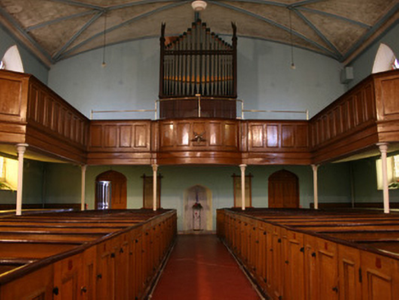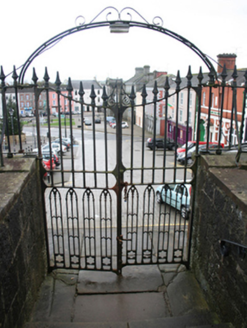Survey Data
Reg No
41304032
Rating
Regional
Categories of Special Interest
Archaeological, Architectural, Artistic, Social
Original Use
Church/chapel
In Use As
Church/chapel
Date
1820 - 1860
Coordinates
250108, 325890
Date Recorded
19/12/2011
Date Updated
--/--/--
Description
Freestanding limestone cruciform-plan Gothic Revival Church of Ireland church, built 1822-5, probably to designs by Board of First Fruits diocesan architect, John Bowden, or his successor, William Farrell, replacing Plantation church of 1641 that was rebuilt 1696. Extended and remodelled 1857–8 as pro-cathedral by Alexander Hardy of Derry to designs by Ecclesiastical Commission architect, Joseph Welland. Renovated 1881. Comprises single-bay nave flanked by shallow transepts of 1858, with chamfered re-entrant corners to front/east. Three-stage tower to east end, lowest stage accommodating chancel, flanked by vestry and porch of 1858. Terraced boundary wall built 1825. Castellated stair hall and flanking porches to west end. Pitched slate roofs with cut-stone copings and cast-iron rainwater goods. Mono-pitched slate roofs to entrance porches. Rubble stone walls, coursed cut stone to east elevation, with diagonal buttresses to all corners except structures flanking tower. Cut-stone eaves course, roughly dressed plinth course to nave and transepts. Ashlar stonework to upper stages of tower, and buttresses. Square-profile entrance tower with crenellated parapet, pinnacles and spire with cut-stone string courses defining stages. Pointed arch window openings, single to nave and paired to transepts, with chamfered cut-stone surrounds, hood-mouldings and Y-tracery, cut-stone sills and cast-iron lattice frames with stained-glass quatrefoils to spandrel, window form repeated in stair hall, porches and top stage of tower. Double lancet windows with cut sandstone surrounds to gables of vestry and south-east porch, with cast-iron lattice frames. Square-headed double-light windows to middle stage of tower with latticed timber windows and label-mouldings. Triple-light window to east wall of chancel, with chamfered surround, hood-moulding and cusped tracery, and with stained glass. Plaque commemorating fallen of Great War below same window below label-moulding. Tudor-arch door openings with chamfered cut-stone surrounds, double-leaf timber panelled doors, and limestone steps. Steep flight of fourteen cut sandstone steps with wrought-iron rails rises from street to wall surrounding churchyard. Coursed cut-stone boundary wall with cut-stone coping and diagonal buttresses, with wrought-iron double-leaf entrance gates and railings. Cut-stone elliptical archway to east accessing laneway alongside, with wrought-iron vehicular gate. Interior having pointed chamfered chancel arch, Gothic Revival panelling to walls of chancel with decorative panelled altar screen atop marble plinth to rear of altar table. Decorative wrought-iron altar and moulded timber rail. Marble lectern and pulpit, and carved stone baptismal font. Marble and brass memorials and plaques to sides of chancel and to walls flanking chancel. Panelled timber gallery to rear of church, continuing to transept gables, supported on iron columns extending into opposing transepts. Pointed arch door openings to vestry and south-east porch, with timber battened doors, and Tudor-arch doorways elsewhere to interior. Timber pews with panelled sides on raised timber platforms. Tudor-arch niche to wall under gallery. Graveyard around church, with variety of grave markers. Date-stone of 1696 in boundary wall, to south-west side of churchyard. Situated on elevated site with commanding view over town.
Appraisal
Prominently sited overlooking The Diamond, St Tighearnach’s Church dominates the skyline of Clones. The building is dominated by the tall steepled tower and the scale of the building is further enhanced by the structures flanking the tower, and the transepts looming behind. The steep steps emphasise the hilltop location. The location of the chancel, in the lowest stage of the tower, is most unusual, due to the liturgical necessity for the chancel to be at the east, and the main porches giving access to the church are thus furthest from the main approach. The quality of stonework, particularly to the east-facing elevation, is high, and the building exhibits a variety of good masonry and stone-cutting details. The variety of windows and doorways is also of note. Its interior displays good-quality joinery in the gallery and pews and more especially in the altar backdrop, and the marble and wrought-iron altar furniture and the various plaques add significantly to the interest of the building. Formally a pro-cathedral the church is of architectural, social and historical importance.
